A little too much like an old classic
When 2014 Donruss was announced, it looked like it could be the missing piece in the Panini lineup. After all, while Panini has had some success in high end (2012 National Treasures), shiny stuff (2012/2013 Prizm), prospects (various Elite Extra Edition releases and 2013 Prizm Perennial Draft Picks), and specialty retro (2013 Pinnacle and Hometown Heroes), they have no real base product to speak of. With an ever-rotating list of products (National Treasures was demoted to an insert set in 2013 America’s Pastime), there’s nothing to really define Panini as a brand. If you were collecting in the ’80s, you probably associate the Panini name with stickers and not cardboard. It was only fitting then that Panini should launch their first true base product under the Donruss name, a throwback to a simpler time when it was possible to produce licensed baseball card products in competition with Topps.
For me, the Donruss name brings back memories of the 1986 and 1989 designs, Diamond Kings, Rated Rookies, and puzzles that never quite fit together right. There are a lot of classic elements in the history of Donruss but also plenty of bad decisions and disappointments. Unfortunately, 2014 Donruss takes a few of the former and mixes in a lot of the latter, creating a product that is a little too faithful to the brand’s lineage.
Card Design
Panini dressed up their first attempt at a base Donruss product like a bride. There’s something old (the pre-1986 Donruss logo), something new (quality cardstock and gloss coating), something borrowed (the baseballs in the strips of color on either side of the photo), and something blue (the blue cardback style used in 1988 and 1991 Series 1). Overall, it’s not a bad look, a more refined take on the brand’s design that incorporates elements from across the first decade of Donruss.
At least, that’s how it looks until you consider the photographs. The basic design itself is a bit boring, but that makes sense when you consider that the player photograph is what should draw your attention. You can forgive a border that is devoid of any bright color if it contrasts well with a colorful photo. And that’s where the lack of a license from MLB Properties kicks in. Without the rights to use team names or logos, Panini removed all trace of team identity from the photos they used, right down to eliminating the color orange from nearly every Mets card. The Rated Rookies cards of Travis d’Arnaud and Wilmer Flores use photos from the Las Vegas 51s and the Granderson is obviously a Yankees photo, but everything else looks like it started out as a proper Mets uniform. The end result is a lot of blue and white, just like the border. They would have been better off converting the photos to black and white.
Mets Selection
You can’t really fault Panini for their choices here. Two rookies, two hot young pitchers, one captain, the biggest offseason acquisition, and a future Hall of Famer. That’s a good core group right there. And with only 200 cards in the set (30 of which are Diamond Kings with duplicate players), there’s no room for anything more. Only 200 cards? That’s the same size as Topps Archives (not counting SPs; Archives is actually a much larger set when you account for SPs), a product that also mixes current players with retired stars. Shouldn’t this be more in line with base Topps or even Topps Heritage? 200 cards just isn’t enough for this type of product. Two 330-card series would make more sense, especially if Series 2 could be released in late September with All-Star SPs taking the place of the Diamond Kings. Panini did use the insert sets to expand the total number of players (Dillon Gee, Jon Niese, Johan Santana, Ike Davis, Andrew Brown, and supposedly Jeurys Familia all appear in the inserts).
Subsets
With only 200 cards to work with, there wasn’t much room for variety in the subsets. Panini went with the classics here, starting the set with 30 Diamond Kings and 15 Rated Rookies, each subset inserted at a rate of one every 6 packs. I’m not sure the different level of scarcity between the two subsets makes much sense (each Rated Rookie should fall just over 4 per case on average, compared to just over 2 per case for Diamond Kings), but I guess Panini wanted to pack in the rookies. In terms of design though, these just fall flat. The Rated Rookies have all of the same problems as the base cards while the Diamond Kings are just too bland, though the 1984 Diamond King design is faithfully recreated. Instead of art cards, the Diamond Kings in 2014 Donruss have a pair of photoshopped photographs mimicking the typical Diamond King layout. The large sections of solid color in the border plus photographs with all detail wiped away equals a design that is simply lacking.
Retro Inserts
The strongest category by far is the array of inserts found in 2014 Donruss. We’ll start though with the ones that don’t factor into the Mets team set. Team MVPs and Power Plus both borrow from the 1989 design and do a good job of remaining distinct despite the common inspiration. Something about the Team MVPs just looks wrong to me though, probably how the MVP logo is at the bottom over the photo instead of at the top under the photo. With hat/helmet logos cropped out, the old design just wouldn’t work. One other criticism is that, like the Diamond Kings subset, the Team MVPs insert set doesn’t have a card from every team. The set is the right size (30 cards), but some teams are featured multiple times with a mix of active and retired players.
The Mets do have representation in four of the retro-inspired insert sets and the results are impressive. The best design by far in 2014 Donruss is the one used for the No-No’s [sic] inserts. The combination of elements from the 1986, 1989, and 1991 Donruss designs is almost seamless and the logo, while new, looks like it could be from that period. I’m actually a bit disappointed that this wasn’t the base design, I would have liked to have gotten a few more cards like this Santana (instead, only 10 cards were produced in this design). You barely notice the horribly mangled photograph.
The formula was a bit simpler for The Rookies with the 1988 colors in a new design with a Diamond Kings nameplate and the Panini RC logo. On top of that, Travis d’Arnaud’s photo is the only one with prominent orange (David Wright’s base card with a visible orange undershirt is the only other card showing a Met wearing orange).
And then we have The Elite Series and Elite Dominators, some nice metallic inserts based on the early ’90s inserts and numbered to match (a more reasonable 999 instead of the original 10,000). It’s strange to see these falling 2 or 3 per box when the original versions were so hard to pull. Print runs sure have changed… Two different Elite insert sets is a bit much though, with the 50 total cards outnumbering the entire Elite print run from 1991-1994. Another reason why a second series would have made sense.
Modern Inserts
Not all of the inserts in 2014 Donruss look like they came from earlier decades. The Breakout Hitters/Pitchers and Hall Worthy inserts both feature a mix of matte and gloss textures on unique designs. This style has previously appeared in Panini Cooperstown and connects the vintage Donruss elements with the current incarnation under Panini.
Parallels
And what modern baseball card product would be complete without serial numbered parallels? 2014 Donruss has four, though they only have two different designs. The Press Proof parallels come in silver (numbered to 199) and gold (numbered to 99) varieties and feature the standard base card design with a “PRESS PROOF” stamp and a foil-stamped serial number. The Stat Line parallels are printed on metallic foil and come in season (silver stamp) and career (gold stamp) varieties, though the numbering is based only on the stat shown (with a maximum print run of 400). It would have been nice if Panini had limited the minimum print run as well; Stat Line print runs can be as low as three. Some additional variety would also have been nice; a die-cut version or some different color foils would have really helped to set the different parallels apart.
Box Toppers
I don’t know why more products don’t throw a box topper card in every box. Back in the day, boxes used to have cards printed on the bottom as a small bonus for buying so much at one time. Box bonuses eventually shifted to the inside of the box with improved quality and decreased frequency. Today, box toppers tend to be extremely limited with box prices starting at $60 for most products. Every box of 2014 Donruss includes one of 25 jumbo 5″ x 7″ Diamond King cards as a box topper, with autographed versions of 24 of them randomly inserted at an unspecified rate (while not serial numbered, these are most likely limited to 50 copies or fewer). Some of the box topper Diamond Kings don’t appear in the base set and vice versa, which seems a bit odd. Otherwise, this was a great touch and a welcome callback to the jumbo Diamond Kings from decades past.
Donruss Signatures
Donruss was one of the first products to feature autograph cards (Upper Deck beat them by just a few months) and the Donruss/Leaf Signature products in the late ’90s are still some of the best autograph products ever produced. A strong autograph set was therefore a must for 2014 Donruss. Sadly, the Donruss Signatures name is the only element that draws from the Donruss legacy. The card design looks like a reject from 2013 Panini America’s Pastime and the checklist is mostly prospects and young players, the type who sign autograph stickers by the thousand (all of the big names are on low-numbered autograph inserts that fall one every two cases on average). Four Mets are featured in the 50-card set, but Andrew Brown’s first certified autograph is the only one you are likely to find. Zack Wheeler’s autograph appears to be a short print and no copies of the Jeurys Familia or Wilmer Flores autographs have surfaced so far.
Recollection Autographs
The original Recollection Collection autographs, which ran from 2002 to 2005 in various Donruss and Leaf products, set the standard for buyback autographs. Featuring diverse checklists of hundreds of players who had appeared on a Donruss or Leaf card of some sort from 1981 to the early 2000s, these cards featured a foil logo stamp, embossed authenticity guarantee, and foil-stamped serial number on the back. In recent years though, Leaf, now under separate ownership, has had the buyback autograph market to themselves. 2014 Donruss brings back the Recollection name with buyback autographs focused on rookie cards and featuring an embossed logo and handwritten serial number. Ron Darling, Dwight Gooden, and Darryl Strawberry are the Mets featured here. A total of just over 1,000 Recollection Autograph cards were produced, making them fall less than one per case on average. It’s a shame Panini couldn’t have gotten a few hundred more so they could make this a guaranteed case hit.
Game Gear
Four Mets are also on the 50-card Game Gear checklist, but this time all four are fairly common. As 14,000 Phillies pointed out, the Game Gear design borrows from the 1980 What If design from 2002 Donruss Originals. The Game Gear name itself is a remnant from Pacific, which last produced baseball cards just before Donruss returned under Playoff in 2001. The material provided an additional throwback; most of the jersey swatches in the Ike Davis, Dillon Gee, and Jon Niese cards are from their 1993 throwback jerseys. Like the Game Gear inserts in 2001 Private Stock, cards with jersey swatches also have a patch parallel (numbered to 25 in this case).
Wrapper Redemption
It has nothing to do with the Mets, but Donruss announced a wrapper redemption good for a three-card pack of Rated Rookies that will be cards 201-203 in the set. While the names have not been announced, the Yankees’ Masahiro Tanaka is believed to be among the three. The wrappers just might be the most valuable thing inside boxes of 2014 Donruss.
Case Break
So far, 2014 Donruss looks like a mild success. The designs are, for the most part, strong with a good mix of elements from across three decades of Donruss products. The minuscule set and some truly awful photographs take it down a notch and the lack of a license from MLB Properties hurts its collectibility. The biggest problem though is figuring out just what kind of product 2014 Donruss is trying to be. It doesn’t have the checklist to be a base product, it’s not heavy on prospects, the cards aren’t all that premium, and the price isn’t comparable to a discount product. The guarantee of two autographs and one relic (though two per box is common) per box brings it to a price point comparable to base Topps or a product like Heritage or Archives, but the quality and value of these “hits” is not on par with those Topps releases. So just what does that make 2014 Donruss?
A disappointment, especially if you open it by the case. Doing some math puts the print run of 2014 Donruss at around 1,400 cases, give or take. Spread across those 1,400 cases are 765 premium autographs (plus autographed box toppers), 1018 Recollection autographs, and 1089 patch cards. The Stat Line parallels add about another 6,000 cards numbered to less than 99. That gives you a best case scenario of getting one good autograph, a patch card, and four parallels numbered to around 50 in a 16-box case with no other serial numbered autograph or memorabilia cards. For a $1,000 case, that’s not a whole lot of value. With perfect collation, the rest of the case should give you two full 200-card sets, 14 155-card base sets, 4 Power Plus insert sets, 2 The Rookies insert sets, 2 Hall Worthy insert sets, 1 No-No insert set, most of the Breakout Hitters and Breakout Pitchers insert sets, half of the Team MVPs insert set, more than half each of the Elite Series, Elite Dominators, Donruss Signatures, and box topper sets, and less than half of the Game Gear insert set, plus plenty of parallels and extra Rated Rookies.
But you’re not going to get perfect collation, even inside a sealed case where collation shouldn’t be a problem. I took a chance on a team break of a case of 2014 Donruss (done by Brent Williams) knowing that it wasn’t spectacular but expecting a minimum of duplicates of the more limited inserts. With four Mets each on the autograph and memorabilia checklists, at least there would be a few interesting cards to look forward to. What I wasn’t expecting was for the collation to be another aspect of the older Donruss sets that was faithfully reproduced in 2014 Donruss.
The Donruss products of the late ’80s and early ’90s were produced in tremendous quantities, but building a set was no easy matter. This was due to collation so spectacularly bad that you could pull dozens of one card before finding just one of another. Getting the same card twice in the same pack was not all that unusual. This problem was hardly unique to Donruss, but Donruss was a prime example of collation that could be infuriating at times.
These days, smaller print runs and more controlled packouts help to keep collation more reasonable, especially within a single sealed quantity like a box or a case. After all, duplicates in small amounts of a product are largely worthless to most collectors and reduce the value in the product. With ever-narrowing profit margins, any cheap way to increase value is worthwhile. So what happened with 2014 Donruss?
The results of this case break were not pretty. Of the 32 autographs, only 23 were different (one appeared three times). The Game Gear inserts weren’t much better: 16 different out of 21 base versions. 11 of the 16 box toppers were different with one triplicate among them. Results for other limited inserts were similar. By the time the break was halfway through, duplicates had already appeared in all of the major insert sets with checklists 50% or more greater than the number of cards that would be found in a case.
For the Mets, the results were mixed. The Hall Worthy and The Rookies inserts delivered two each as expected. The number of Breakout Pitchers inserts was two, as expected, but both were Dillon Gee. No Elite Series or Elite Dominators inserts turned up, but only two of the 50 are Mets and only 35 (30 different) were in the case. Only one of the four Mets Game Gear cards were in the case, as were two copies of the Andrew Brown autograph. One of the two box toppers was a Met, which is reasonable for the checklist size (2 Mets out of 25 cards, 11 different of the 16 in the case). No-No’s (What’s with that apostrophe, Panini?) massively overdelivered, 6 actual vs. 1.6 expected. Diamond Kings also came out ahead (3 actual vs. 2.2 expected) while the expectation of 4.3 of each Rated Rookie was accurate for Wilmer Flores (5 in the case) and way off for Travis d’Arnaud (only 1 with bad surface damage in the entire case). Base cards fell 13 to 15 of each, a bit under the 16+ that would be expected with good collation (each box should have more than 155 base cards, so this indicates bad box-level collation). Three parallels rounded out the team lot, though none of them had print runs lower than 200. Overall, it was a slight disappointment with some very significant over and under deliveries that should be extremely rare outliers in a properly managed packout. Unfortunately, there is no indication of any care taken to manage this product’s packout.
And as for the big hits in the case, the only cards numbered to less than 99 were three Stat Line parallels and an Edwin Encarnacion patch card, with no autographs beyond the base Donruss Signatures cards. That’s poor even for this product’s checklist, which isn’t that great to begin with. On the plus side, this means that there will be some cases with multiple limited autographs. There will also be some cases with no cards worth more than about $10. For a $1,000 case, that’s just not acceptable.
The Verdict
File this one under “Missed Opportunity.” The concept was a great one and parts of the execution were outstanding. On the other hand, other parts ranged from puzzling to awful. Why wasn’t there a Diamond King and Team MVP for every team (not to mention only 10 No-No’s [sic])? Why were all of the photographs photoshopped to oblivion? Where are the Jeurys Familia and Wilmer Flores autographs? Who thought a 155-card base set made any sort of sense? And how did the collation go so horribly wrong? Panini clearly put a lot of effort into bringing together three decades of an iconic brand into one product, why did they stop short of taking the steps necessary to make it a success?
I just can’t recommend buying large quantities of this product to anyone. A few packs or even a box may make sense for some fun nostalgia, but a case has nothing to satisfy anyone. Set collectors will be out of luck unless they buy several cases. Hit collectors won’t see any sort of return. Team collectors won’t have much to chase with this tiny checklist. And anyone who appreciates good photography will want to stay far away from this one. 2014 Donruss missed the mark and in the process delivered the modern equivalent of its 1991 predecessor. This was not the product collectors wanted or the product collectors needed, just a mindless diversion until something better comes along.
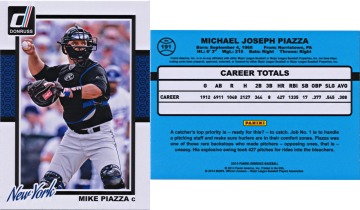
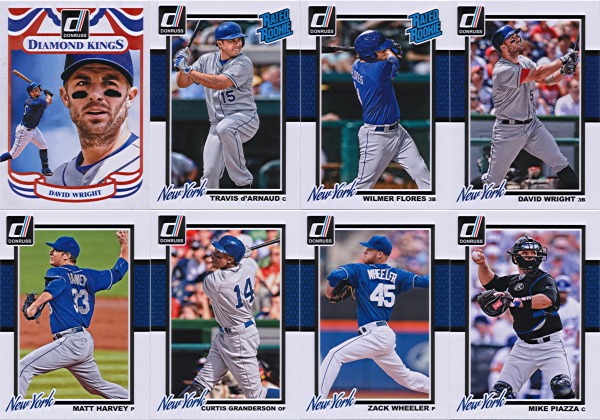
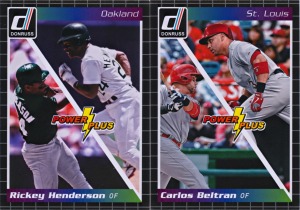
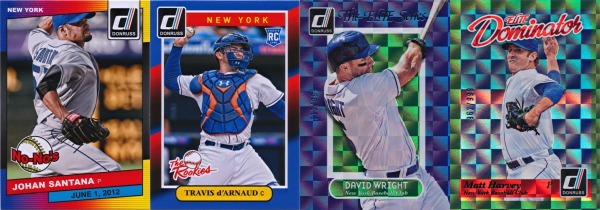
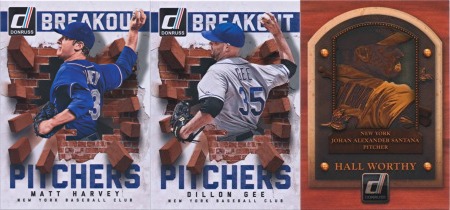
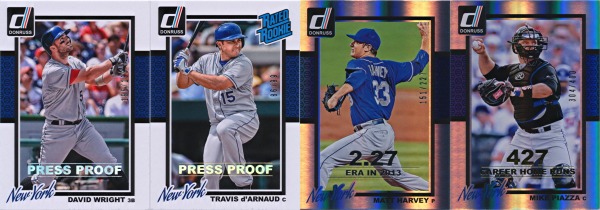
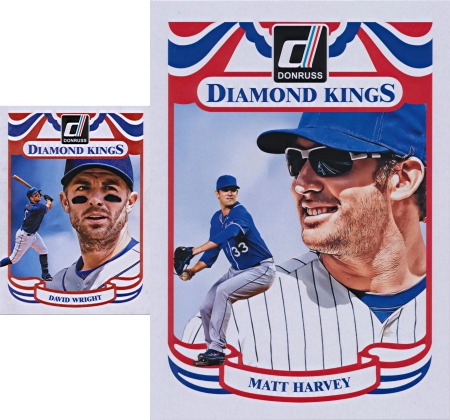
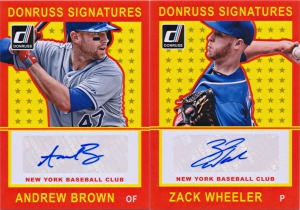
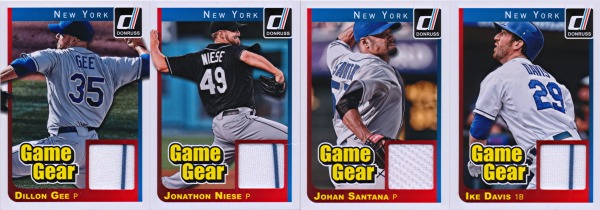
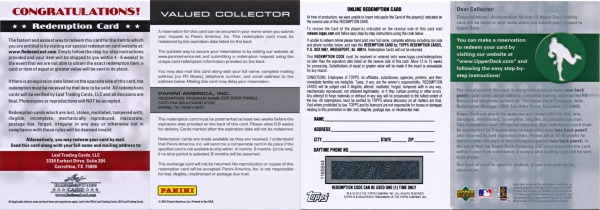
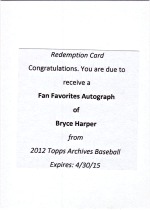

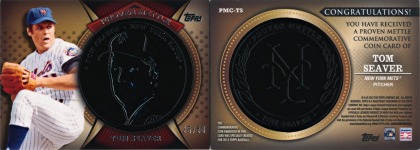
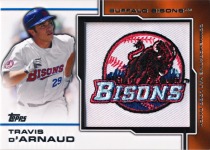
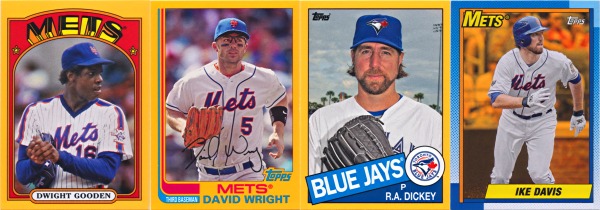
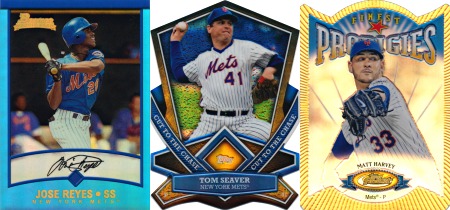
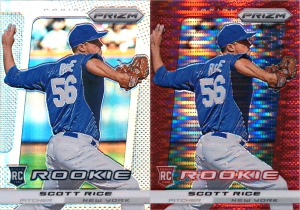
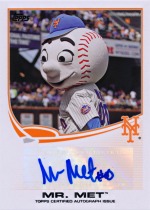
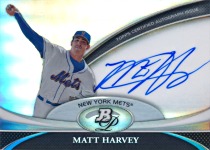
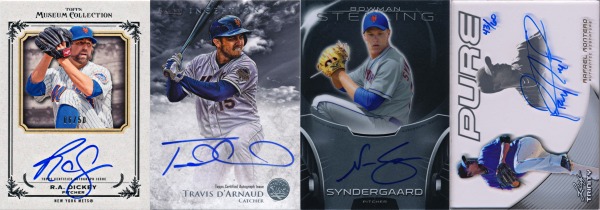
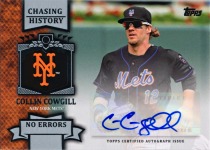
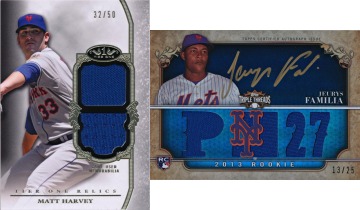
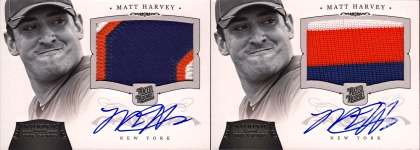
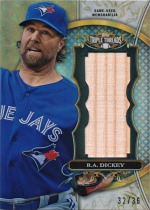
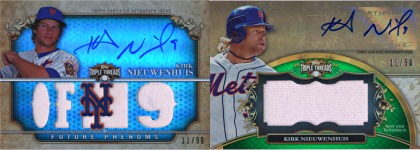
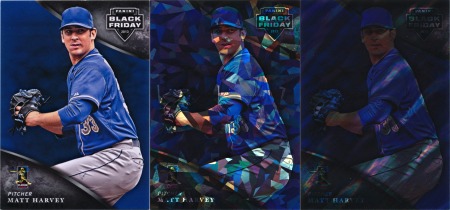
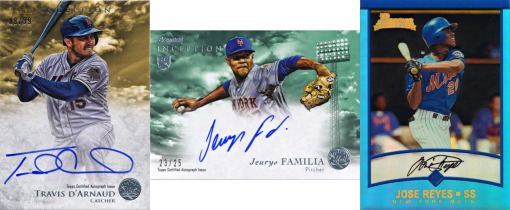
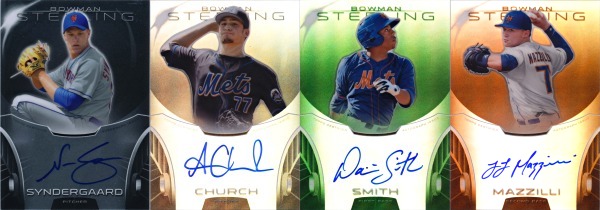
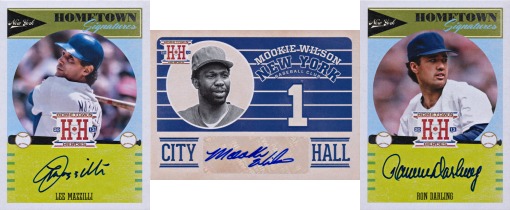
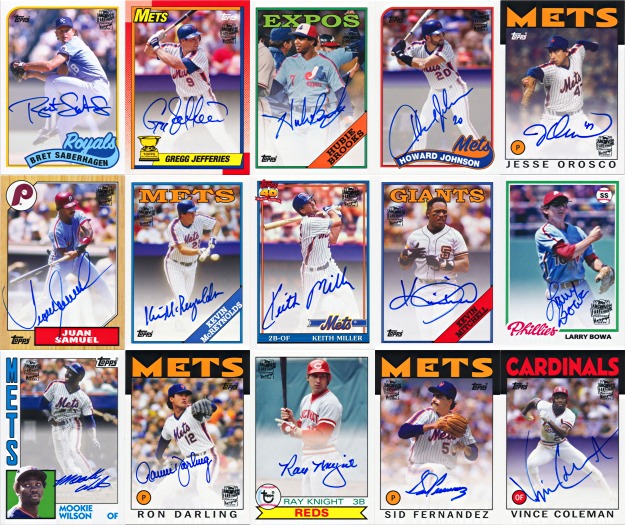
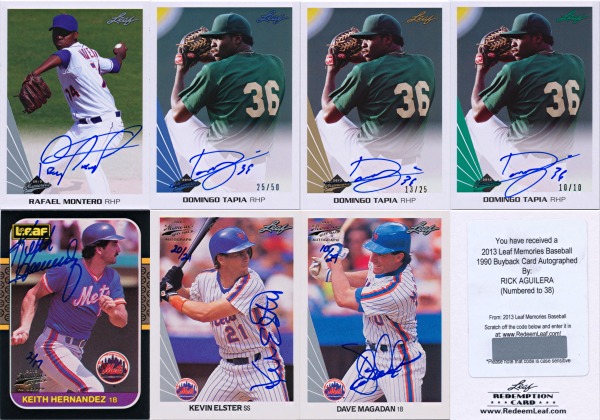
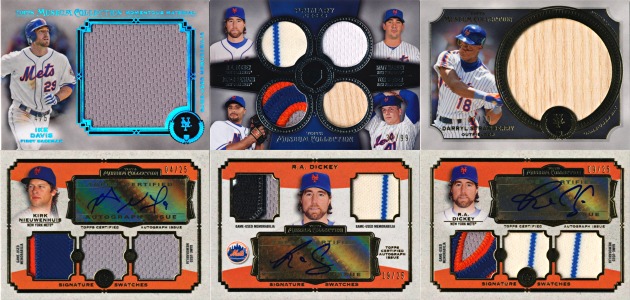

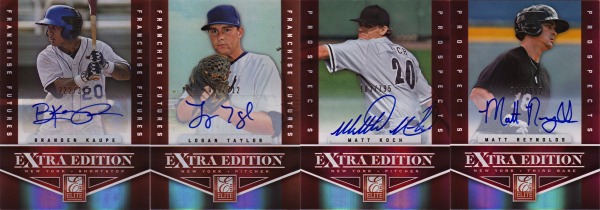
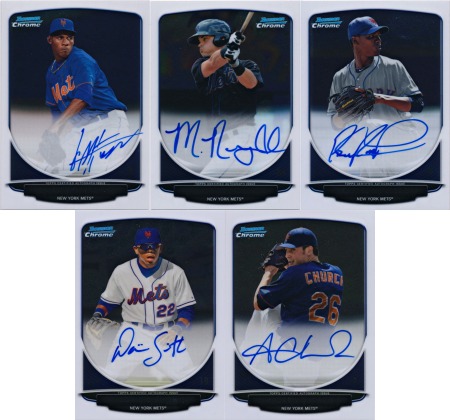
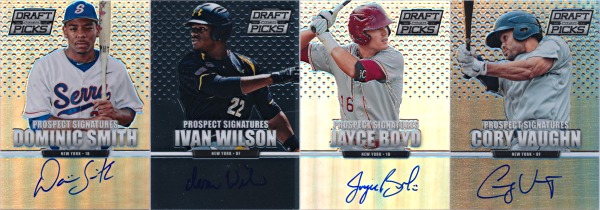
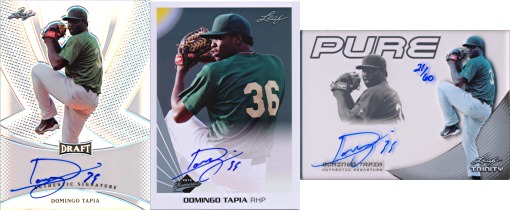
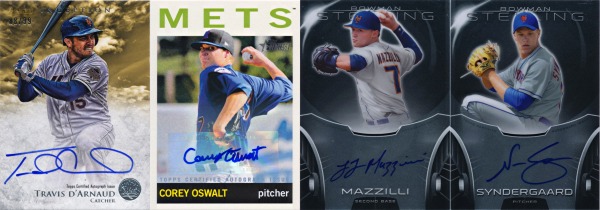
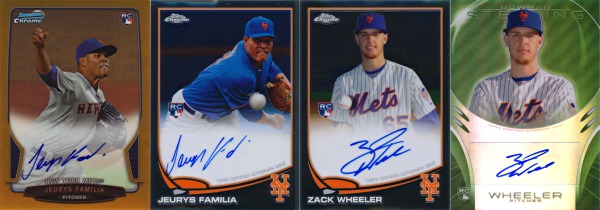
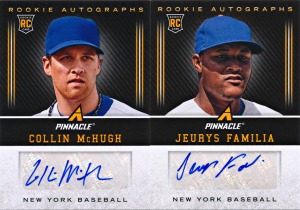
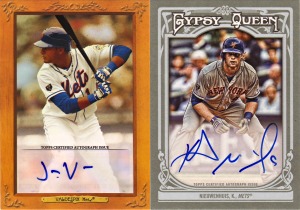
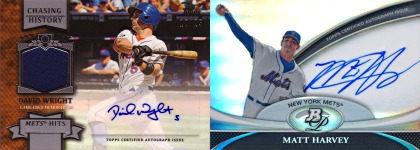

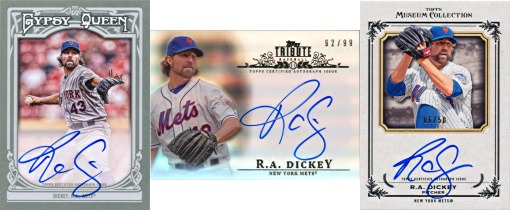
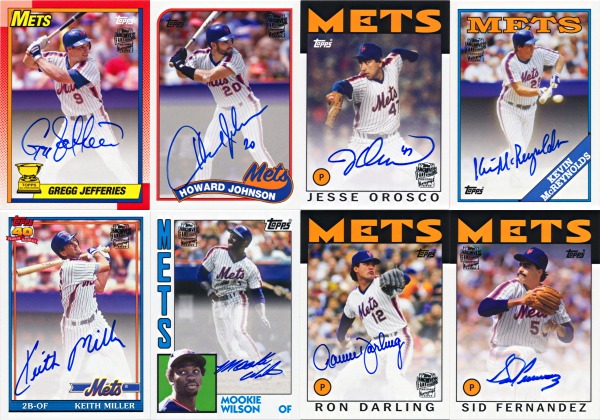
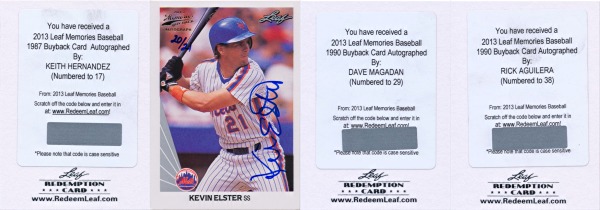

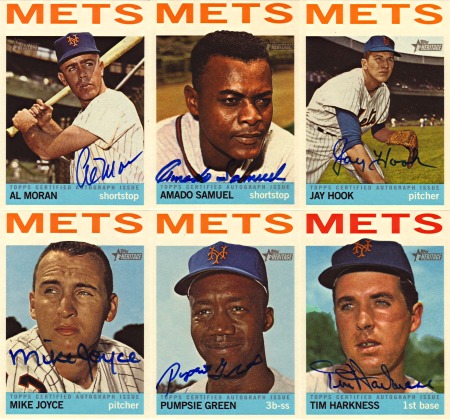
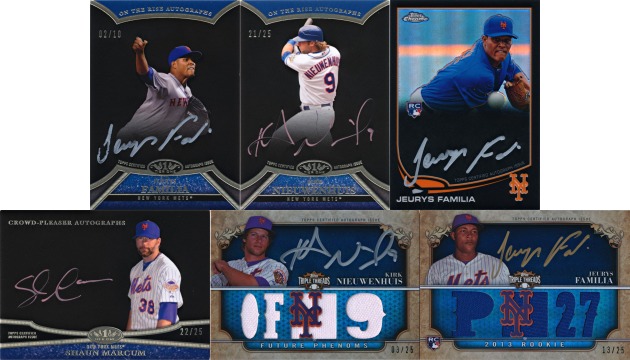
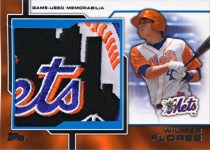
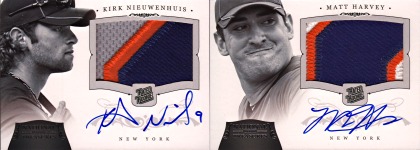

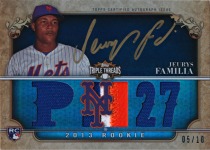
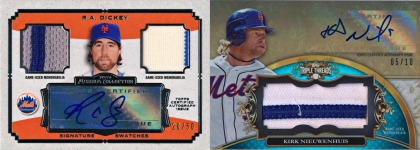
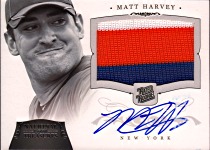
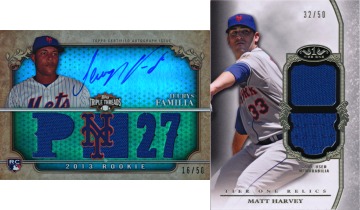
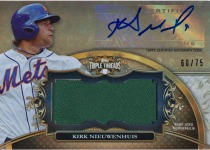



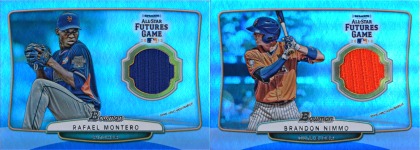
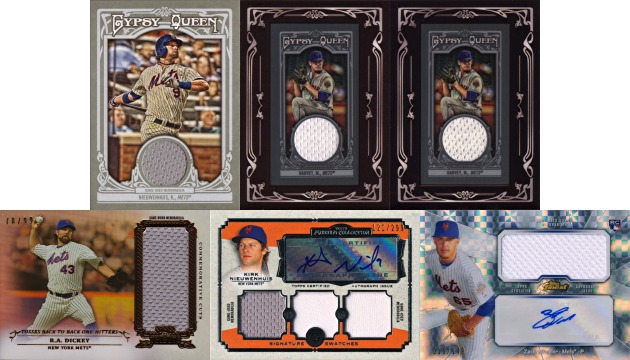
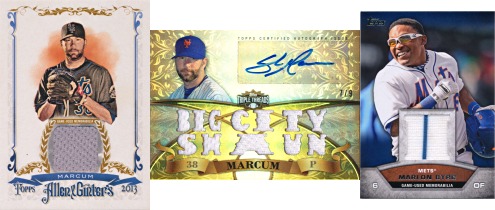
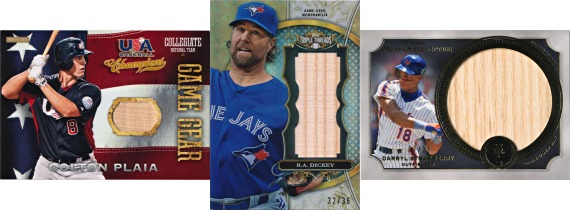
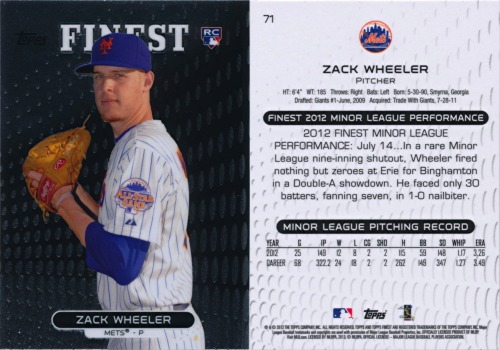
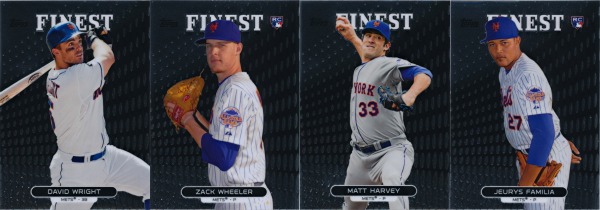
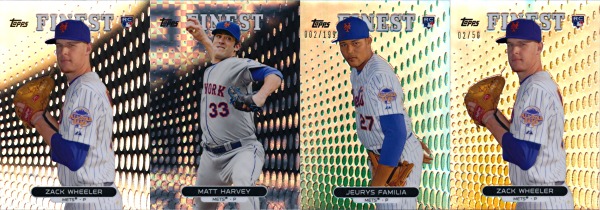
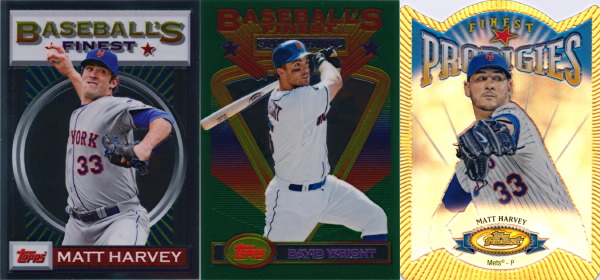
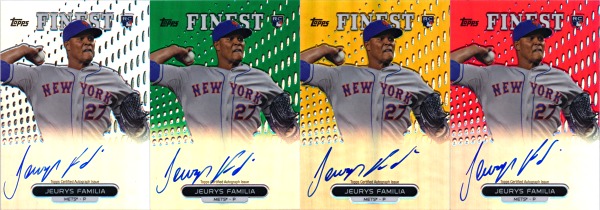
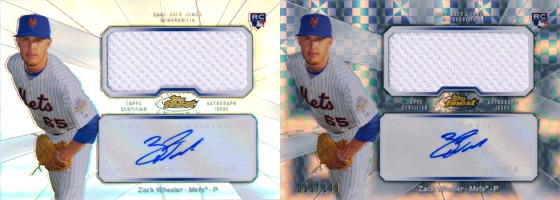
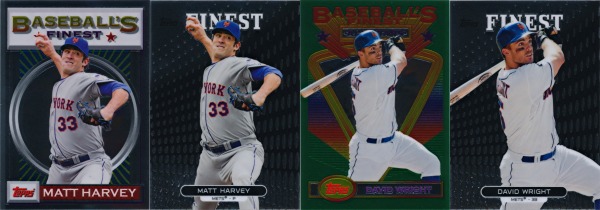
Recent Comments